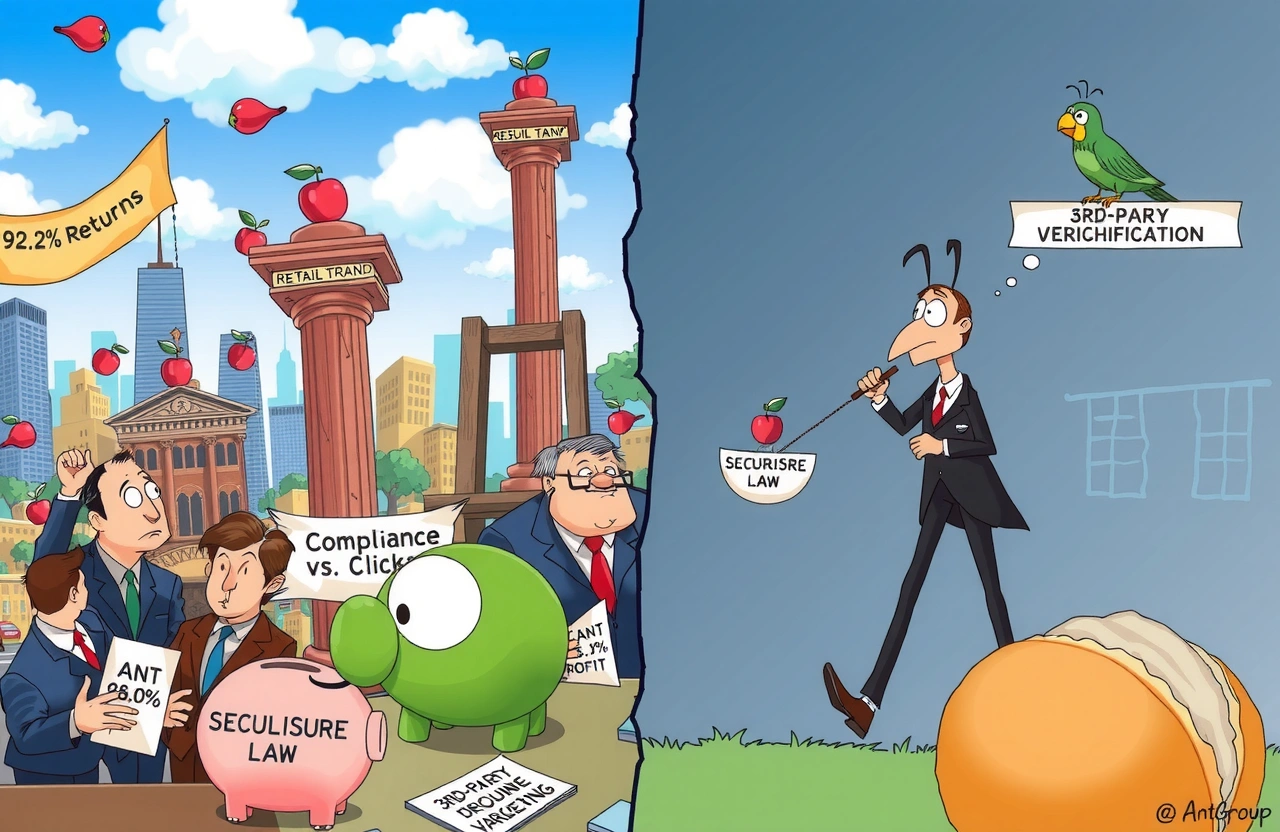Key insights from portfolio disclosure trend:nn- At least eight prominent fund managers have recently shared personal holdings worth up to ¥3.9 millionn- 100% of disclosed portfolios contain managers’ own funds, creating alignment claimsn- Regulators warn of ‘legal gray areas’ in social media interactions and risk disclosuresn- Platforms like Ant Group face pressure to prevent ‘disguised marketing’n- Performance discrepancies shown in disclosures raise investor expectation concernsnn
The New Wave of Portfolio Transparency
nMarket observers noted over a dozen prominent fund managers resuming personal portfolio disclosures during Q2 2025 – a practice gaining momentum since 2023 but now accelerated by platform incentives. Unlike formal fund reporting requirements, these informal disclosures occur through mobile trading apps, social media, and livestream platforms where managers like Yongying Fund’s Ren Jie (任桀) publish real-time trades.nAn industry shift toward ‘investment companionship’ models drives this behavior. Firms publicly frame the disclosures as investor education with managers personally demonstrating conviction. However, scrutiny intensifies around whether these actions prioritize transparency or customer acquisition when deployed through distribution platforms receiving sales-based commissions.n
The Compliance Tightrope
nA leading mutual fund compliance officer anonymously stated: ‘We’re navigating uncharted territory. Daily CEO Weibo posts might violate regulations by their frequency alone.’ Industry data shows that 2025 has seen 300% more portfolio disclosures than 2024, coinciding with market rallies where over 68% of disclosed portfolios showed gains.n
Portfolios Under the Microscope
n
Case Study: Ren Jie’s Tech Strategy
nYongying Fund’s Ren Jie (任桀) accumulated 21.4 million yuan through weekly 1,000 yuan additions to Yongying Technology Hybrid Fund C with returns at 62.2%. Unlike other managers, Ren consistently discloses positions during downturns – a pattern compliance experts call ‘contextually responsible’.n
High-Stakes Disclosures
nGuojin Fund’s Yao Jiahong (姚加红) disclosed 3.9 million yuan invested in proprietary quant products earning 930,000 yuan profit. The sheer scale surprised observers since typical disclosures range between 50,000-500,000 yuan. Larger positions could mislead retail investors regarding minimum investment thresholds.n
The Motivation Behind Disclosures
nAsset managers cite dual purposes for portfolio disclosures:nn- Trust Building: Xinyuan Fund’s Liu Junwen (刘俊文) wrote ‘investors see me eating my own cooking’ while disclosing 1.13 million yuan portfolion- Platform Pressure: Distribution giants require quarterly disclosure quotas as part of partnership agreementsnPerformance varies widely among disclosed portfolios. Debond Fund’s Lei Tao (雷涛) showed 43% returns in one fund against 20% losses in another – heterogenous results reflecting systemic industry issues managers might prefer to conceal.n
Legal Flashpoints Emerge
n
Regulatory Shortcomings
nCurrent Securities Investment Fund Law requires disclosure of employee investments but lacks provisions forcenn- Social media commentary boundariesn- Standardized risk warning formatsn- Clear consequences for selective disclosure omissionnThe phrase ‘stable long-term returns’ appears in 31% of manager communications despite regulations banning profit guarantees. Risk disclaimers become abbreviated templates rather than product-specific warnings as platforms prioritize engagement metrics.n
Platform Incentives and Dangers
nDistribution platforms fueling portfolio disclosures face conflicting priorities:nn- Transaction Volume: TianTian Fund pays bonuses for manager engagement driving AUM growthn- Compliance Burden: Each disclosure requires 3-person review teams analyzing 50+ risk parametersnPlatforms haven’t established protocols for:n- Frequency limits helping prevent perception of market timingsn- Mandatory underperformance explanationsn- Uniform historical benchmarking standardsn
The Path to Regulatory Clarity
nChina (HK) Financial Derivatives Institute director Wang Hongying (王红英) advocates three solutions:nn1. Disclosure frequency limits that prevent performance cherry-pickingn2. Independent third-party verification of all portfolio claimsn3. Separate branding for educational content vs. fund marketing materialsnThe Asset Management Association of China recently began drafting disclosure frameworks that may require:n- Distinct visual identifiers separating personal opinions from fund documentsn- Real-time captions during livestreams flagging speculative statementsn- Mandatory cooling-off periods after major market eventsnInvestors should critically evaluate disclosed portfolios in three key ways: Performance consistency across market cycles, fee structure transparency among overlapping holdings, and manager turnover risks at smaller funds. Regulatory evolution remains essential to prevent disclosure formats from becoming uncontrolled marketing vehicles in the digital age.



